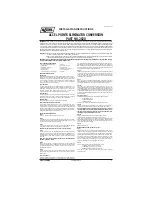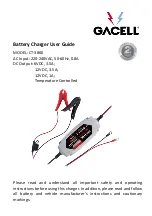
Filling the tank for FFV equipped vehicles
Your vehicle will operate on both unleaded gasoline with an octane rating
of 87, or E-85 fuel, or any mixture of these two. For best results it is
recommended that you do not add less than five gallons of fuel when
refueling. Observing this precaution will avoid possible hard starting
and/or deterioration in drivability during warm up.
Calculating fuel economy
1. Fill the fuel tank completely and record the initial odometer reading
(in miles or kilometers).
2. Each time you fill the tank, record the amount of fuel added (in
gallons or liters).
3. After at least three to five tank fill-ups, fill the fuel tank and record
the current odometer reading.
4. Subtract your initial odometer reading from the current odometer
reading.
5. Follow one of the simple calculations in order to determine fuel
economy:
Calculation 1:
Divide total miles traveled by total gallons used.
Calculation 2:
Multiply liters used by 100, then divide by total
kilometers traveled.
Keep a record for at least one month and record the type of driving (city
or highway). This will provide an accurate estimate of the vehicle’s fuel
economy under current driving conditions. Additionally, keeping records
during summer and winter will show how temperature impacts fuel
economy. In general, lower temperatures give lower fuel economy.
Ethanol has less energy per gallon than gasoline. Fuel economy will
decrease as the percentage of ethanol used is increased.
Improving fuel economy
To improve your fuel economy:
•
Do not leave your vehicle idling for long periods of time.
•
Drive at a moderate pace, with smooth acceleration and deceleration.
•
Turn off speed control in hilly terrain.
•
Follow the recommended maintenance schedule in your
Scheduled
Maintenance Guide
.
•
Do not carry unnecessary weight.
2005 P207 Explorer Sport Trac
(p27)
Owners Guide (post-2002-fmt)
USA_English
(fus)
Maintenance and Specifications
234
Summary of Contents for 2005 P207 Explorer Sport Trac
Page 284: ...284 ...
















































